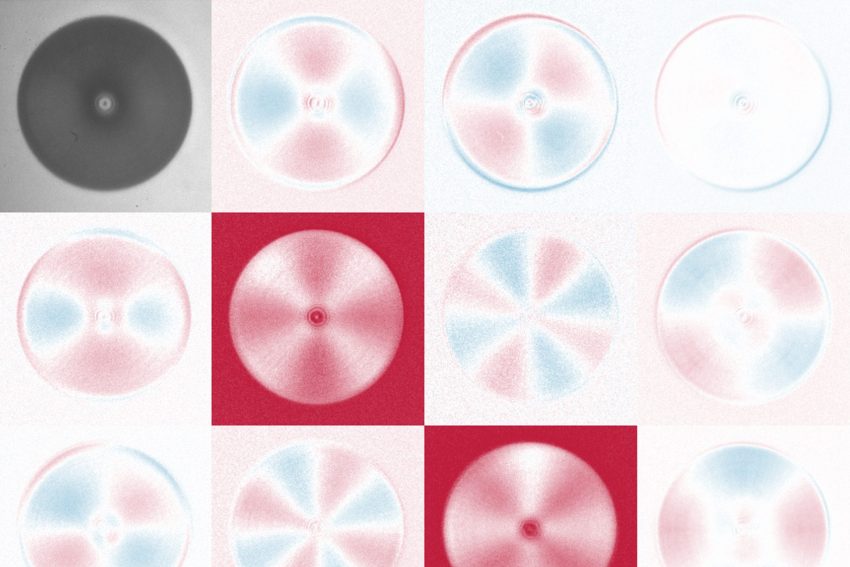Picture of the month: Plasmonic lenses From a collaboration in the LENA research centre
Our picture of the month is not the new album release of the TU Braunschweig, but shows microscopic lenses from the LENA research centre. Like a magnifying glass, the micro-lenses have to be the right distance from the object of observation to see sharply. Their advantage: they get so close that even objects that are not visible with other light microscopes become visible. We received our picture of the month from scientific partners at the Physikalisch-Technische Bundesanstalt (PTB). They are checking whether the necessary tricks also work.
Recorded with the Müller matrix ellipsometer, the first aim of the lenses is to improve the very device from which it is being tested. The many colourful patterns show the polarisation properties of the small discs. In principle, the components of a microscope should under no circumstances change the polarisation, meaning the direction of oscillation of light waves, in an undirected way. The scientists therefore look for symmetry errors in the patterns and then decide whether these errors can be corrected in the final result or whether the lens has to be produced again. Afterwards, the lenses themselves can then help to make the characterisation of polarisation in the ellipsometer more compact and improve it further.
Lenses made of metal
Another trick of the lenses: they are plasmonic. Unlike lenses made of glass, they are intransparent. The light thus does not pass through the lens, but excites so-called plasmons, which emit new light particles on the other side of the lens as a reaction. This time, however, the light is focused on a focal point thanks to a nanostructured surface. The researchers from TU Braunschweig and PTB are working together at LENA to make these lenses suitable for a wide range of applications. For example, they could be used in optics integrated on chips or on the ends of fibre optic cables.

